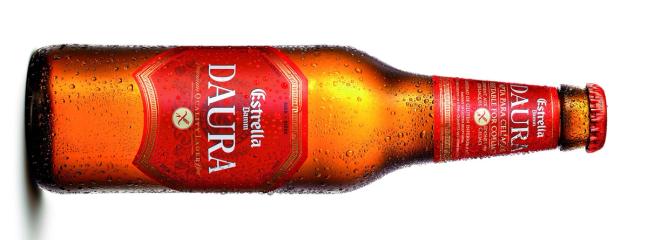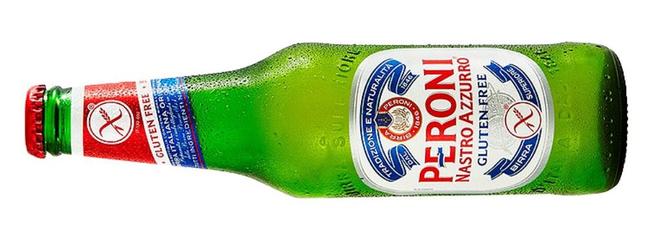Gluten-Free Beers: What are they all about?
It's the new kid on the beer block, but just how good for you are these gluten-free lagers and ales?
For years, the conventional wisdom ran thus: you can enjoy a six pack of beers or a six pack of abs – but not both. The bitter truth for the modern gentleman is that his two greatest pleasures – looking sharp and enjoying the finer things in life – very rarely see eye to eye. In short, you can’t have your cake and eat it, much less have your beer and drink it.
But the latest trend in beer production pledges, albeit fuzzily, to change all that. The gluten free juggernaut has been chugging along at breakneck speeds for over half a decade, and now a small cabal of master brewers have jumped aboard to see if they can shave a tiny bit of guilt from the nation’s favourite pastime. But how are these beers actually made? Are they really any better for you? And how much do they taste like wet cardboard? All this, and more, in the Gentleman’s Journal’s first (and almost certainly last) guide to gluten free beers.

Normal lagers are generally made using barley and wheat, both of which contain gluten. Gluten-free beers, on the other hand, tend to use other grains such as millet, rice, corn, buckwheat or sorghum (ah, delicious sorghum) to rid our fermented friend of the much-maligned protein.
All that’s great, of course, if you have coeliac disease, the severe wheat and gluten intolerance that affects less than 1% of the population. But what about the other 99% of us? For the bulk of the drinking public, the benefits are very much up in the air. Some gentlemen claim gluten free lager makes them less bloated and full, while others prefer the lighter option for its traditionally crisper, slightly fruitier taste.
And then there are those who plump for gluten free beers with one eye on exclusionary regimes such as the paleo diet, with all the unproven and highly-charged claims of gut health, glowing skin and extra energy that these may or may not fulfill.

Those put off by the wooly science would do well to stick around for the hard business lessons. At the end of last year, Mintel backed Gluten-reduced lager as the biggest growth area in the beer market for 2017. And when you see lager titans Peroni and Estrella Damm wading into the gluten-free stuff, you know it’s more than just a passing fad.
All that comes to naught, however, if gluten free beers taste nothing like the real thing. With that in mind, we’ve lined up the four biggest players in the Gluten Free beer revolution and put them to the test.

Not to be confused with Estrella Damm – its fierce rival from the North East of Spain – Estrella Galicia is a punchy new addition to the gluten free game.
Still made in a single brewery and family owned, Galicia’s approach to the gluten problem is as nimble and imaginative as you’d hope – Instead of swapping out the flavourful malted barley for a lesser grain, the Galicians have added a natural enzyme at the filtration process that chomps away the undesirable gluten. The result, remarkably, is a lager that feels largely unchanged: still that golden pilsner style and lightly bitter hops, and then a touch of refreshing sweetness at the finish.

Sure, it’s technically a pale ale, but the Scottish micro-brewery’s offering feels much closer to a lager. Malty and caramelly at the start, the Vagabond has a citrus-tinged, almost tropical finish. A gluten-free option for the beer connoisseur, perhaps. But not as good, it must be said, as the brewhouse’s standard Kingpin lager. If you genuinely like craft beers, and you aren’t a coeliac, why not just go for the real thing?

Damm were the first movers in the market, and for many years their Daura bottling beat down the competition at every contest across the world. At the risk of igniting a century old feud, however, we don’t think it quite stacks up to the new offering from its southern cousin, Estrella Galicia. Still, it’s very solid, with a refreshing, floral nose and a light sweetness on the finish. You wouldn’t know the difference between this and the real thing.

The latest and loudest entrant into the market is Peroni. And the Italians, it seems, have also chanced upon the natural formula, using a secret blend of enzymes to rid the beer of its gluten containing proteins. Eerily similar to the real thing, the Peroni Senza Glutine has a pleasingly bitter touch on the finish and a lingering, citrus-filled palette. Good, but expensive.

Become a Gentleman’s Journal Member?
Like the Gentleman’s Journal? Why not join the Clubhouse, a special kind of private club where members receive offers and experiences from hand-picked, premium brands. You will also receive invites to exclusive events, the quarterly print magazine delivered directly to your door and your own membership card.


